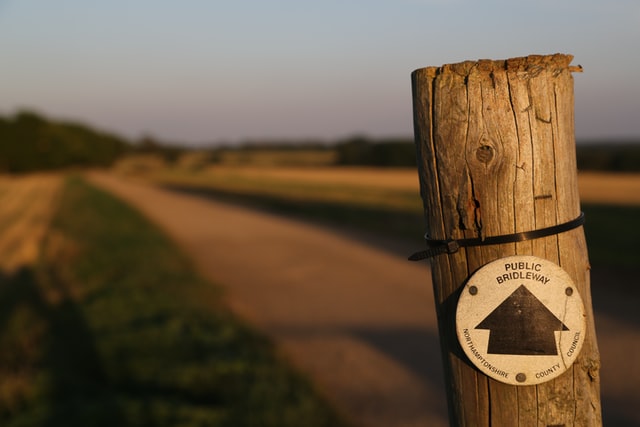Across the country, landowners have seen public rights of way used more than ever in the last couple of months due to the country’s population exercising from home and exploring their local areas because of the lockdown restrictions.
Whilst some seasoned explorers may know the routes of nearby public rights of way like the back of their hand, there are others who decide to deviate off the beaten track, to take a short cut or simply, get lost!
So, is there anything a landowner can do to restrict rights of way being created through public use?
Landowners can make it clear to the public that they have no right to cross their land by erecting appropriate signs (for example, ‘Private Property – Keep Out’ or ‘No Public Access or Right of Way’), creating obstructions such fences or padlocked gates, or if seen in person, even challenging the users and advising them of the no through way. However, many of these approaches come with their limitations and it is sometimes difficult to maintain a presence.
As well as the physical acts referred above, landowners have the added option set out in legislation. Landowners can lodge an application under S31(6) of the Highways Act 1980 with their Local Authority to acknowledge any existing public rights of way across their land and prevent any new rights becoming established through public use.
Under Section 31(6), a landowner or their authorised agent firstly deposits a statement in the prescribed form (Form CA16) to their Local Authority with a map showing any routes over their land which they acknowledge to already be classified as public rights of way. Within 20 years from the submission, the landowner must then lodge with their Local Authority a declaration (again, in a prescribed form) to confirm that no new public rights of way have been dedicated since the deposit of the statement. Any public use of the land during this period will not count towards the establishment of any new rights of way.
Whilst a S31(6) declaration and statement will stop newly claimed rights of way in their tracks, the procedure will not protect your land where evidence can be shown that the public had established 20 years of uninterrupted use which expired before the initial statement and plan were deposited with the Local Authority. The Act will also not offer any protection where rights come to light as a result of historical evidence nor will it remove any public rights of way which are already legally recorded.
With the deadline of the 1st January 2026 looming in respect of Part II of the Countryside Rights of Way Act 2000, it is predicted that any unrecorded footpaths and bridleways may be subject to S31 (6) applications in the next few years to come. If any unrecorded routes which are not recorded by 1st January 2026, the routes may be extinguished (the precise criteria for extinguishment is not yet known).
As you can see, there are various ways in which a landowner can attempt to restrict public rights of way being claimed across their land and there may be different motives for doing so, for example security, protect livestock, preserve development potential.
If you would like advice in respect of public rights of way and how to prevent them from being created, please contact the Agricultural Team at Harrowells.



